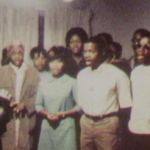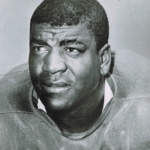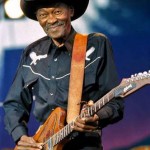National Memorial to Honor Lynching Victims Opens April 26
(DiversityInc) There was a time in the U.S. when white people would gather in public squares in the Deep South to witness Black men, women or children hanged, burned or amputated, sometimes all of the above. This form of domestic terrorism is a painful part of American history that Bryan Stevenson said needs to be remembered in order to heal the racial divide in this country.
Prairie View choir recalls their meeting with Martin Luther King Jr. just two weeks before his death
(CBS News) Two weeks before Dr. Martin Luther King Jr.’s death, he met a college choir group at the Lorraine Motel. It’s a little-known story about the civil rights icon that had a lasting impact on the young singers. Wednesday marks the 50th anniversary of his assassination.
On March 18, 1968, an exhausted King retired to the Lorraine Motel in Memphis. He was wrapping up a long day of organizing on behalf of the city’s striking sanitation workers. It was nearing midnight but King accepted an invitation from a choir from the historically black college Prairie View A&M University to sing for him. Crammed into a small conference room, the a cappella concert choir sang for the civil rights leader. The moment was captured by a filmmaker following King. They were a bit nervous but confident – and they delivered.
Martin Luther King Jr.’s children reflect on his legacy: “He was a doer, not just a dreamer”
CBS News’ James Brown brought six members of the choir back to the Lorraine Motel – which is now the National Civil Rights Museum – to reminisce about that night, 50 years ago. (more, including video)
The International Vision of John Willis Menard, First African-American Elected to Congress
Although he was denied his seat in the House, Menard continued his political activism with the goal of uniting people across the Western Hemisphere
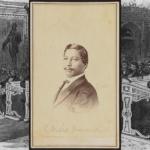
The Library of Congress recently digitized this portrait of John Willis Menard, the only known photograph of the African-American trailblazer. (Composite of Library of Congress images)
(Smithsonian) In July 1863, months after Abraham Lincoln issued the Emancipation Proclamation, a young African-American man from Illinois boarded a small ship in New York City and headed for Belize City, in what was then British Honduras. John Willis Menard, a college-educated political activist born to free parents of French Creole descent, made his Central American journey as a representative of Lincoln’s. His goal: to determine whether British Honduras was a suitable location for previously enslaved Americans to relocate.
Menard’s trip to Central America was undoubtedly an unusual period in his early political career—one that never came to fruition—but it set the stage for decades of internationalism. Wherever he moved and whatever position he held, Menard repeatedly considered African-American liberation in the context of the New World’s dependence on the work of enslaved laborers.
That work, and Menard’s brief foray into the world of legislation is part of what makes his appearance in a newly digitized photo album so remarkable. The album, acquired by the Library of Congress and Smithsonian’s National Museum of African-American History and Culture last year, features rare portraits of dozens of other abolitionists of the 1860s, including Harriet Tubman and the only known photo of Menard (shown above). While those photos offer unique insight into the community of abolitionists fighting for a better future for African-Americans, what they don’t show is the controversy that sometimes surrounded that debate. (more)
LBJ Library Exhibit
“Get in the Game: The Fight for Equality in American Sports”
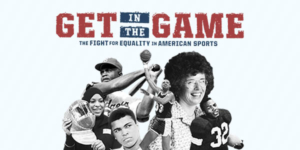 The LBJ Presidential Library in Austin will open its latest exhibit, “Get in the Game: The Fight of Equality in American Sports” Saturday (April 21). The exhibit examines the intersection of social justice and sports in the United States and celebrates athletes who have broken barriers and spoken out for equality, both on and off the playing field.
The LBJ Presidential Library in Austin will open its latest exhibit, “Get in the Game: The Fight of Equality in American Sports” Saturday (April 21). The exhibit examines the intersection of social justice and sports in the United States and celebrates athletes who have broken barriers and spoken out for equality, both on and off the playing field.
The exhibit, which will be on view through January 13, 2019, opens at 9 a.m., however, the library will hold related free festivities – a block party – from 10 a.m. to 3 p.m., including sports activities, music, food trucks, and souvenir giveaways.
Beginning in the early 1900s and continuing through current day, Get in the Game encourages visitors to think about sports as part of an on-going national conversation and as a vehicle for social change. Curated by the LBJ Library, Get in the Game features rare artifacts, video, audio, and interactive displays. An interactive social media wall encourages an ongoing conversation about equality in sports using the hashtag #LBJGetInTheGame.
Among the exhibition’s many items are:
• Stephen Curry, Kareem Abdul-Jabbar, and LeBron James autographed jerseys
• Michael Jordan’s first Nike Air Jordan Sneakers and others from 1985-2000
• Venus and Serena Williams’ 2008 Olympic uniforms
• Muhammad Ali autographed boxing gloves
• Jesse Owens’ diary from the 1936 Olympics in Berlin
• Negro League baseball jerseys and cleats
Click here for more information.
TIPHC Bookshelf
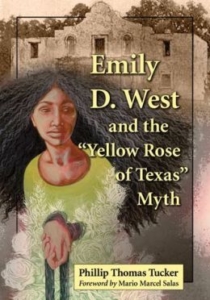 Published scholarship on black history in Texas is growing and we’d like to share with you some suggested readings, both current and past, from some of the preeminent history scholars in Texas and beyond. We invite you to take a look at our bookshelf page – including a featured selection – and check back as the list grows. A different selection will be featured each week. We welcome suggestions and reviews. This week, we offer, “Emily D. West and the “Yellow Rose of Texas” Myth,” by Phillip Thomas Tucker.
Published scholarship on black history in Texas is growing and we’d like to share with you some suggested readings, both current and past, from some of the preeminent history scholars in Texas and beyond. We invite you to take a look at our bookshelf page – including a featured selection – and check back as the list grows. A different selection will be featured each week. We welcome suggestions and reviews. This week, we offer, “Emily D. West and the “Yellow Rose of Texas” Myth,” by Phillip Thomas Tucker.
For the first time, the true story of “The Yellow Rose of Texas” is told in full, revealing a host of new insights and perspectives on one of America’s most popular stories. For generations, the Yellow Rose of Texas has been one of America’s most popular western myths, growing larger over time and little resembling the truth of what happened on April 21, 1836, at the battle of San Jacinto, where a new Texas Republic won its independence. The woman who has been popularly connected to the story was an ordinary but also quite remarkable free black woman from the North, Emily D. West. This work reconstructs her experience, places it in full context and explores the evolution of a most fanciful myth.
Apr 16
National Football League defensive back Dick “Night Train” Lane was born in Austin on this day in 1928. After serving in the Army during World War II and the Korean War, Lane was signed as a free agent in 1952 with the Los Angeles Rams, though he’d only played at Austin Anderson High School and Scottsbluff (Neb.) Junior College. During his 13-year career, Lane was known as ferocious, intimidating hitter and was responsible for the banishment of the clothesline tackle. Lane’s 14 interceptions in 1952 still stands as an NFL record for rookies. In 1969, just four years after his retirement, he was voted the best cornerback in the first 50 years of the NFL, and in 1974 was inducted to the Pro Football Hall of Fame. In 2001, he was inducted into the Texas Sports Hall of Fame.
Apr 17
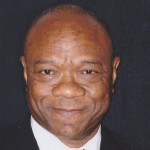 Two-time All-Pro running back Delvin Williams was born on this day in 1951 in Houston. Williams graduated from Kashmere Gardens High School in 1970 and was a Parade Magazine All-American and one of the most sought after prep running backs in the country, recruited by every major college football program. Williams chose the University of Kansas and four years later became a second round pick of the San Francisco Forty-Niners. He thrived in the National Football League for eight seasons, becoming the first player in NFL history to rush for 1,000 yards in a season for two different teams (Niners and Miami Dolphins). Williams was also the first player in NFL history to set rushing records for two different teams, and to be named to the Pro Bowl for both an AFC & NFC team.
Two-time All-Pro running back Delvin Williams was born on this day in 1951 in Houston. Williams graduated from Kashmere Gardens High School in 1970 and was a Parade Magazine All-American and one of the most sought after prep running backs in the country, recruited by every major college football program. Williams chose the University of Kansas and four years later became a second round pick of the San Francisco Forty-Niners. He thrived in the National Football League for eight seasons, becoming the first player in NFL history to rush for 1,000 yards in a season for two different teams (Niners and Miami Dolphins). Williams was also the first player in NFL history to set rushing records for two different teams, and to be named to the Pro Bowl for both an AFC & NFC team.
Apr 18
On this day in 1924, Clarence “Gatemouth” Brown was born in Vinton, Louisiana. Brown was raised in Orange, Texas where he learned to play several instruments beginning with fiddle at age 5, followed by guitar, mandolin, viola, harmonica, and drums. Brown got his nickname from a high school teacher who said he had a voice “like a gate.” He made dozens of recordings in the 1940s and ’50s, including many regional hits – “Okie Dokie Stomp,” “Boogie Rambler,” and “Dirty Work at the Crossroads.” He was nominated six times for Grammy Awards and was awarded one in 1983 in the “Traditional Blues” category for his album, “Alright Again.”
Apr 21
 This date marks the commemoration of the song The Yellow Rose of Texas. The song grew out of the Battle of San Jacinto when Texas forces led by Sam Houston defeated the Mexican troops of Gen. Santa Anna in 1836 and won Texas’ independence from Mexico. The song is a tribute to a woman (Emily West) who supposedly “entertained” the Mexican general, delaying his preparations for the battle, while the Texians successfully attacked and defeated his army in an 18-minute skirmish. However, the woman’s true identity and actual role, if any, in the battle is the subject of great debate. Generally, she is thought to have been a light-skinned mulatto, but other theories say she was Hispanic. The songs’ composer is also a mystery, though its original lyrics seem to suggest a black man:
This date marks the commemoration of the song The Yellow Rose of Texas. The song grew out of the Battle of San Jacinto when Texas forces led by Sam Houston defeated the Mexican troops of Gen. Santa Anna in 1836 and won Texas’ independence from Mexico. The song is a tribute to a woman (Emily West) who supposedly “entertained” the Mexican general, delaying his preparations for the battle, while the Texians successfully attacked and defeated his army in an 18-minute skirmish. However, the woman’s true identity and actual role, if any, in the battle is the subject of great debate. Generally, she is thought to have been a light-skinned mulatto, but other theories say she was Hispanic. The songs’ composer is also a mystery, though its original lyrics seem to suggest a black man:
There’s a yellow rose in Texas
That I am going to see
No other darky (sic) knows her
No one only me
She cryed (sic) so when I left her
It like to broke my heart
And if I ever find her
We nevermore will part.
Blog: Ron Goodwin, Ph.D., author, PVAMU history professor
Ron Goodwin is an assistant professor of history at Prairie View A&M University. Even though he was a military “brat,” he still considers San Antonio home. Like his father and brother, Ron joined the U.S. Air Force and while enlisted received his undergraduate degree from Texas Lutheran University in Seguin, Texas. After his honorable discharge, he completed graduate degrees from Texas Southern University. Goodwin’s book, Blacks in Houston, is a pictorial history of Houston’s black community. His most recent book, Remembering the Days of Sorrow, examines the institution of slavery in Texas from the perspective of the New Deal’s Slave Narratives.
Recent Posts
Wakanda Forever — Part 2
The internet records the following regarding the financial success of the Black Panther as of March 25, 2018: Receipts grossed $631.4million in the US and Canada and a worldwide total of $1.239 billion; The film made $370.5million worldwide in its opening weekend (the 15th largest of all time); Thus far, Black Panther is the highest-grossing solo superhero film and the 3rd third highest-grossing movie in the Marvel Cinematic Universe (MCU); and In only five weeks after
Maybe they were right
Historians sometimes disagree as to the motives of the American Revolution and the development of the 1787 Constitution that still guides our broader society. Were the Founding Fathers willing to commit treason to protect their money? Maybe. When they sat down to amend the Articles of Confederation they ended with a new Constitution that presented a sly form of democracy that actually limits full citizen participation in the electoral process. The election of presidents from
Submissions wanted
Historians, scholars, students, lend us your…writings. Help us produce the most comprehensive documentation ever undertaken for the African American experience in Texas. We encourage you to contribute items about people, places, events, issues, politics/legislation, sports, entertainment, religion, etc., as general entries or essays. Our documentation is wide-ranging and diverse, and you may research and write about the subject of your interest or, to start, please consult our list of suggested biographical entries and see submission guidelines. However, all topics must be approved by TIPHC editors before beginning your research/writing.
We welcome your questions or comments. Please contact Mr. Michael Hurd, Director of TIPHC, at mdhurd@pvamu.edu.

